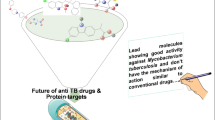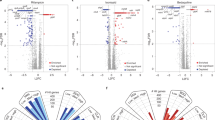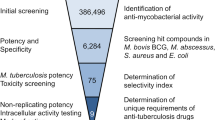Abstract
The amalgamation of the research efforts of biologists, chemists and geneticists led by scientists at the Department of Zoology, University of Delhi has resulted in the development of a novel rifamycin derivative; 24-desmethylrifampicin, which is highly effective against multi-drug resistant (MDR) strains of Mycobacterium tuberculosis. The production of rifamycin analogue was facilitated by genetic-synthetic strategies that have opened an interdisciplinary route for the development of more such rifamycin analogues aiming at a better therapeutic potential. The results of this painstaking effort of nearly 25 years of a team of students and scientists led by Professor Rup Lal have been recently published in the Journal of Biological Chemistry (www.jbc.org/content/289/30/21142.long). This strategy can now find applications for developing newer rifamycin analogues that can be harnessed to overcome the problem of MDR, extensively drug resistant (XDR) and totally drug resistant (TDR) M. tuberculosis.





Similar content being viewed by others
References
Kalia VC, Rani A, Lal S, Cheema S, Raut CP (2007) Combing databases reveals potential antibiotic producers. Expert Opin on Drug Discov 2:211–224. doi:10.1517/17460441.2.2.211
Purohit HJ, Cheema S, Lal S, Raut CP, Kalia VC (2007) In search of drug targets for Mycobacterium tuberculosis. Infect Disord Drug Targets 7:245–250. doi:10.2174/187152607782110068
Global tuberculosis report 2013-www.who.in/tb/publications/global_report/en/
Maggi N, Pasqalucci CR, Ballotta R, Sensi P (1966) Rifampicin: a new orally active rifamycin. Chemotherapea 11:285–292. doi:10.1159/000220462
Wehrli W, Knusel F, Schmid K, Staehelin, M (1968) Interaction of rifamycin with bacterial RNA polymerase. Proc Natl Acad Sci USA 61: 667–673. (http://www.ncbi.nlm.nih.gov/pmc/articles/PMC225211/?page=1)
Campbell EA, Korzheva N, Mustaev A, Murakami K, Nair S, Goldfarb A, Darst SA (2001) Structural mechanism for rifampicin inhibition of bacterial RNA polymerase. Cell 104:901–912. doi:10.1016/S0092-8674(01)00286-0
Kalia VC, Purohit HJ (2011) Quenching the quorum sensing system: potential antibacterial drug targets. Critical Rev Microbiol 37:121–140. doi:10.3109/1040841X.2010.532479
Kalia VC (2013) Quorum sensing inhibitors: an over view. Biotechnol Adv 31:224–245. doi:10.1016/j.biotechadv.2012.10.004
Kalia VC (2014) Microbes, antimicrobials and resistance: the battle goes on. Indian J Microbiol. 54:1–2. doi:10.1007/s12088-013-0443-7
Kalia VC, Wood TK, Kumar P (2014) Evolution of resistance to quorum sensing inhibitors. Microb Ecol 68:13–23. doi:10.1007/s00248-013-0316-y
Diacon AH, Dawson R, Bidlingmaier-Groote FV, Symons G, Venter A, Donald PR, Niekerk CV, Everitt D, Winter H, Becker P, Mendel CM, Spigelman MK (2012) 14-Day bactericidal activity of PA-824, bedaquiline, pyrazinamide and moxifloxacin combinations: a randomized trial. Lancet 380:986–993. doi:10.1016/S0140-6736(12)61080-0
August PR, Tang L, Yoon YJ, Ning S, Müller R, Yu TW, Taylor M, Hoffmann D, Kim CG, Zhang X, Hutchinson CR, Floss HG (1998) Biosynthesis of the ansamycin antibiotic rifamycin: deductions from the molecular analysis of the rif biosynthetic gene cluster of Amycolatopsis mediterranei S699. Chem Bio 5:69–79. doi:10.1016/S1074-5521(98)90141-7
Lal R, Khanna R, Dhingra N, Khanna M, Lal S (1998) Development of an improved cloning vector and transformation system in Amycolatopsis mediterranei (Nocardia mediterranei). J Antibiot (Tokyo) 51:161–169. doi:10.7164/antibiotics
Lal R (1999) Cloning vector and the process for the preparation thereof. US Patent US00598560A
Khanna M, Dua M, Lal R (1998) Selection of suitable marker genes for the development of cloning vectors and electroporation in different strains of Amycolatopsis mediterranei. Microbiol Res 153:205–211. doi:10.1016/S0944-5013(98)80002-5
Lal R, Kumari R, Kaur H, Khanna R, Dhingra N, Tuteja D (2000) Regulation and manipulation of the gene clusters encoding type-I PKSs. Trends Biotechnol 18:264–274. doi:10.1016/S0167-7799(00)01443-8
Tuteja D, Dua M, Khanna R, Dhingra N, Khanna M, Kaur H, Saxena D, Lal R (2000) The importance of homologous recombination in the generation of large deletions in hybrid plasmids in Amycolatopsis mediterranei. Plasmid 43:1–11. doi:10.1006/plas.1999.1426
Dhingra G, Kumari R, Bala S, Majumdar S, Malhotra S, Sharma P, Lal S, Cullum J, Lal R (2003) Development of cloning vectors and transformation methods for Amycolatopsis. J Ind Microbiol Biotechnol 30:195–204. doi:10.1007/s10295-003-0040-6
Nigam A, Almabruk KH, Saxena A, Jongtae Y, Mukherjee U, Kaur H, Kohli P, Kumari R, Singh P, Zakharov LN, Singh Y, Mahmud T, Lal R (2014) Modification of rifamycin polyketide backbone leads to improved drug activity against rifampicin resistant Mycobacterium tuberculosis. J Biol Chem 289:21142–21152. doi:10.1074/jbc.M114.572636
Acknowledgments
This work was supported by the Department of Biotechnology (DBT). AS, UM, RK & PS thank the University Grant Commission for providing fellowships.
Author information
Authors and Affiliations
Corresponding author
Rights and permissions
About this article
Cite this article
Saxena, A., Mukherjee, U., Kumari, R. et al. Synthetic Biology in Action: Developing a Drug Against MDR-TB. Indian J Microbiol 54, 369–375 (2014). https://doi.org/10.1007/s12088-014-0498-0
Received:
Accepted:
Published:
Issue Date:
DOI: https://doi.org/10.1007/s12088-014-0498-0




